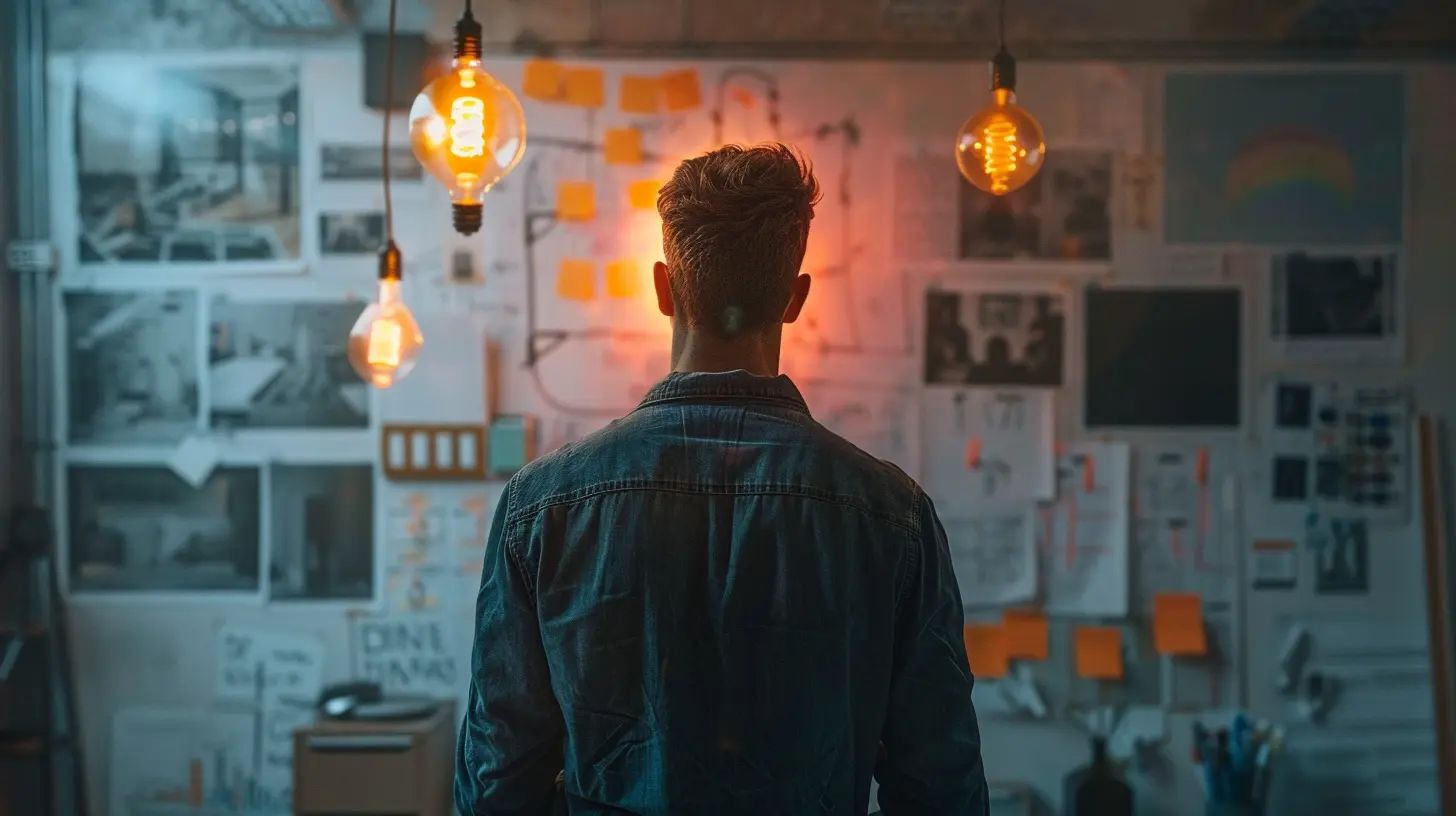The Role of Design Thinking in Problem-Based Learning
21 August 2025
Problem-solving is more than just finding the right answer—it's about asking the right questions, thinking creatively, and collaborating to build real-world solutions. That’s where Design Thinking steps in. When you combine it with Problem-Based Learning (PBL), magic happens. This combo doesn't just teach students facts—it prepares them to tackle life’s challenges, head-on.
In this article, we’ll dive deep into how design thinking enhances PBL, why it matters in education today, and how it can reshape the way students learn and think. So whether you're an educator, a parent, or just someone who loves new approaches to learning, buckle up. You're in for a treat.
What Is Design Thinking, Anyway?
Before we pair it up with PBL, let’s get clear on design thinking.Design thinking is a creative, human-centered approach to problem-solving. It’s not just for engineers or designers—anyone can use it. Think of it as a way of thinking that helps you understand people’s needs, test new ideas, and tweak them until they really work.
The Stages of Design Thinking
The process typically follows five key stages:1. Empathize – Understand the user and their needs.
2. Define – Clearly state the problem.
3. Ideate – Brainstorm creative solutions.
4. Prototype – Build a mock-up or test version of the solution.
5. Test – See how well the solution works and refine it.
Sounds a bit like building with LEGO, right? You build something, take a step back, tweak it, and try again. That’s where the fun lies.
So, What Is Problem-Based Learning?
Now let’s talk PBL.Problem-Based Learning is a student-centered approach where learners tackle real (or realistic) problems. Instead of being spoon-fed information, they have to dig in, collaborate, ask questions, and build their knowledge through solving the issue.
Here’s how it typically works:
- A complex, open-ended problem is presented.
- Students research, discuss, and identify what they need to learn.
- They apply their knowledge to propose a solution.
- Teachers act more like facilitators than lecturers.
PBL isn't about memorizing facts for a test. It's about applying knowledge in meaningful ways. And that’s why it pairs so perfectly with design thinking.
The Sweet Spot: Where Design Thinking Meets PBL
Now, imagine combining the flexible, iterative nature of design thinking with the inquiry-based, real-world focus of PBL. Boom! You’ve got a powerhouse of creativity, critical thinking, and collaboration.Let’s break down why this combo works so well:
1. Empathy Adds Depth to Learning
One of the first steps in design thinking is empathy. This means students start by stepping into someone else’s shoes. In PBL, this adds a layer of understanding that makes the problem more real and personal.Say students are working on a project about improving school lunches. With empathy, they don’t just talk about what they want to eat—they interview cafeteria staff, survey younger students, and consider dietary needs. Suddenly, solving the problem becomes about more than themselves. It becomes human.
2. Defining the Right Problem Leads to Better Solutions
Often, students jump straight to solving something before really understanding what the actual problem is. Design thinking forces them to slow down and define the problem properly—just like how a doctor needs a proper diagnosis before prescribing medicine.This analytical step gives structure to the usually open-ended nature of PBL, helping students avoid the “where do we start?” paralysis.
3. Ideation Sparks Creative Thinking
Here’s the fun part—coming up with ideas. In PBL, students already brainstorm, but when design thinking principles are layered in, they’re encouraged to think wilder, broader, and more freely.“No idea is too crazy” becomes the motto. Sticky notes fly, debates happen, and the room buzzes with possibility. This creative storm often leads to surprising, innovative solutions that wouldn’t surface under more rigid methods.
4. Prototyping Turns Ideas Into Reality
Even the best ideas are just that—ideas—until you test them out. That’s where prototyping shines. Design thinking teaches students to try it out, see if it works, and then adapt.In the context of PBL, this might mean building a small model, writing a sample policy, or crafting a digital mock-up. The process of making something tangible helps students see flaws in their ideas and drives improvement through hands-on learning.
5. Testing and Feedback for Continuous Growth
You know how athletes watch tapes of their games? They do it to get better. Testing in design thinking serves the same purpose. Students test their solutions (often with real people), get feedback, and then revise their work.This iterative process means learning never really stops. And isn’t that the goal? To keep improving, keep questioning, and keep growing?
Real-World Impact: Why This Combo Matters
Let’s face it—today’s students are heading into a world full of complex challenges. Climate change, global health crises, social injustice—the list goes on. Traditional teaching methods won’t cut it. We need to prepare students to think critically, solve problems, and work together.Here are just a few reasons why the role of design thinking in PBL is so critical:
- It mirrors real-life problem solving. In the real world, you don’t get multiple-choice questions. You get messy, complicated issues that need creative thinking.
- It builds soft skills. Communication, collaboration, adaptation—these are the skills employers crave.
- It increases engagement. Students feel more ownership over their learning. They’re not just learning content—they're using it.
Classroom Ready: How Teachers Can Start Today
You don’t need to flip your whole curriculum overnight. Small changes can make a big difference. If you're a teacher and you’re reading this thinking, “This sounds great, but where do I start?”—here are a few ideas:Start With a Design Challenge
Pick a simple, relatable problem. Maybe it’s how to reduce plastic waste in the classroom or how to make homework less stressful. Walk through the design thinking steps with your students.Focus on Empathy
Build in time for interviews, observations, and discussions. Help students really understand who they’re solving the problem for.Encourage Prototyping
Even if it’s just sketching on paper or building something out of cardboard, the act of making helps deepen understanding and engagement.Embrace Failure
Yep, that’s right. Encourage students to see failure as part of the process. Reflect, tweak, and try again. That’s where the learning lives.A Quick Example: Tackling Food Waste in Schools
Imagine a PBL unit where students are challenged to reduce food waste in the school cafeteria. Here's how design thinking could guide that:- Empathize: Students talk to lunch staff, monitor what’s being tossed, survey classmates.
- Define: They realize the core issue is oversized portions and lack of tasty vegetarian options.
- Ideate: They brainstorm ideas like smaller serving sizes, customizable meals, or educational posters.
- Prototype: They create a sample menu, design posters, or even build a food tracking app.
- Test: They present to staff, get feedback, and refine their ideas.
Suddenly, what started as a project becomes a campaign with real impact.
Challenges and How To Overcome Them
Okay, let’s be real. This approach isn’t without its bumps.Time Constraints
Design thinking and PBL take time. But remember—you’re trading rote learning for deep, meaningful understanding. It’s worth the trade-off.Assessment Confusion
“How do I grade this?” is a common concern. Focus on process over product. Assess collaboration, reflection, creativity, and problem-solving. Rubrics are your friend.Teacher Training
Not every educator is familiar with design thinking. But the good news? Plenty of free resources, online courses, and professional development sessions are out there to help out.Final Thoughts: A Shift Worth Making
Bringing design thinking into problem-based learning isn't just a trend—it’s a shift toward preparing students for the real world. It empowers them to be empathetic, creative, and resilient problem-solvers. And let’s be honest—that's the kind of future we all want.So whether you're rolling it out across a curriculum or just testing it in a single lesson, embracing this dynamic duo can make learning more meaningful, impactful, and, dare we say, fun.
So go ahead—jump in, get messy, and start solving real problems with your students. The future’s waiting, and it's looking pretty bright.
all images in this post were generated using AI tools
Category:
Innovation In EducationAuthor:

Olivia Lewis
Discussion
rate this article
1 comments
Eleanor Roth
Essential approach for innovative student solutions.
September 8, 2025 at 12:47 PM

Olivia Lewis
Thank you! Design thinking truly empowers students to develop innovative solutions through hands-on collaboration and creativity.


